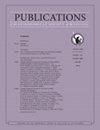Physical Properties of Embedded Clusters in ATLASGAL Clumps with H ii Regions
IF 7.7
3区 物理与天体物理
Q2 ASTRONOMY & ASTROPHYSICS
Publications of the Astronomical Society of the Pacific
Pub Date : 2024-09-03
DOI:10.1088/1538-3873/ad6f44
引用次数: 0
Abstract
Using the optimal sampling model, we synthesized the embedded clusters of ATLASGAL clumps with HATLASGAL 星团中带有 H ii 区域的嵌入星团的物理特性
利用最优采样模型,我们合成了带有H ii区域的ATLASGAL星团的嵌入星团(H i-clumps)。我们用0.1 Myr等时区来估算嵌入星团中每颗恒星的测光度,并加上嵌入星团中每颗恒星的吸积光度。合成嵌入星团的总测光度可以很好地拟合观测到的 H ii-clumps 的测光度。更为现实的是,我们通过模拟恒星形成史(SFH)和时变恒星形成史(SFH),考虑了 H ii-clumps 嵌入星团中年轻恒星和原恒星群的年龄分布。根据恒星群的年龄分布,我们为每颗恒星分配了适当的等时线,并对仍属于原恒星(0级和I级阶段)的恒星天体进行了分类,以适当增加它们的吸积光度。与恒定的SFH相比,类似爆发和随时间变化的SFH更适合观测数据。我们发现,只要嵌入星团中仍有20%的恒星在吸积,吸积光度对质量为log10(Mcl/M⊙) < 2.8的低质量H i-星团的总测光度的贡献就会很大。吸积率、SFE和初始质量函数的变化,以及更多的物理过程,如来自H ii区域的外部加热和来自前主序星和原恒星的闪烁,都需要进行研究,以进一步解释低质量H i-团块的过量光度。
本文章由计算机程序翻译,如有差异,请以英文原文为准。
求助全文
约1分钟内获得全文
求助全文
来源期刊
CiteScore
6.70
自引率
5.70%
发文量
103
审稿时长
4-8 weeks
期刊介绍:
The Publications of the Astronomical Society of the Pacific (PASP), the technical journal of the Astronomical Society of the Pacific (ASP), has been published regularly since 1889, and is an integral part of the ASP''s mission to advance the science of astronomy and disseminate astronomical information. The journal provides an outlet for astronomical results of a scientific nature and serves to keep readers in touch with current astronomical research. It contains refereed research and instrumentation articles, invited and contributed reviews, tutorials, and dissertation summaries.

 求助内容:
求助内容: 应助结果提醒方式:
应助结果提醒方式:


